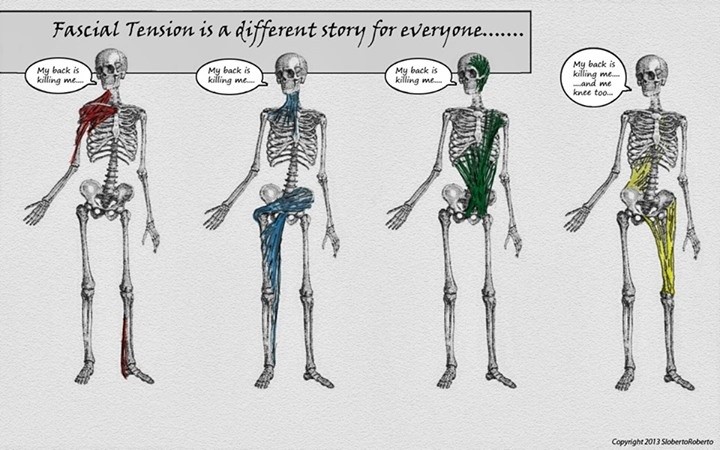What is Fascia?Fascia is a tough connective tissue which spreads throughout the body in a three-dimensional web from head to foot without interruption. Fascia is elastic, strong and fluid, its elastin fibers are rubber-like. Collagen fibers provide strength and protection from over-extension and to maintain the body shape. A gel-like fluid called the ground substance fills the space between the elastin, collagen and muscle fibers. It allows them to glide smoothly and acts as a shock absorber. It forms and surrounds every muscle, bone, nerve, blood vessel and organ of the body, down to the cellular level. It connects each part of the body to all other parts. In its normal state, the fascia is relaxed and flexible. It is able to stretch and move without restrictions.
|
What is Myofascial Release?Myofascial Release (MFR) is a safe, gentle and effective hands-on technique in which soft, sustained pressure is applied into fascial restrictions, allowing elongation and natural relaxation of the fascial connective tissue to eliminate pain and restore motion. MFR balances the bodies tissues to the very deepest layers. Myofascial Release is the treatment of choice to relieve acute or chronic pain. Myofascial release technique (as taught by John F. Barnes, PT) has the ability to treat the source of the problem instead of just treating the symptoms. If you are not living life to your fullest due to pain and restrictions in your body, you owe it to yourself to seek out a qualified myofascial release practitioner.
|
What causes Fascial Restrictions?
Trauma, falls, accidents, postural strain, repetitive stress injuries, scarring, or inflammation can create a binding down of fascia resulting in excessive pressure on nerves, muscles, blood vessels, bones and /or organs. Restrictions in the fascia can create pain and/or limit mobility throughout the body, sometimes with unexplained side effects and seemingly unrelated symptoms in unpredictable locations. Since many of the standard tests such as x-rays, myelograms, CAT scans, etc. do not show the fascial restrictions, it is thought that an extremely high percentage of people suffering with pain and/ or lack of motion may be having fascial problems, most undiagnosed.
